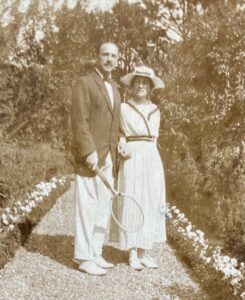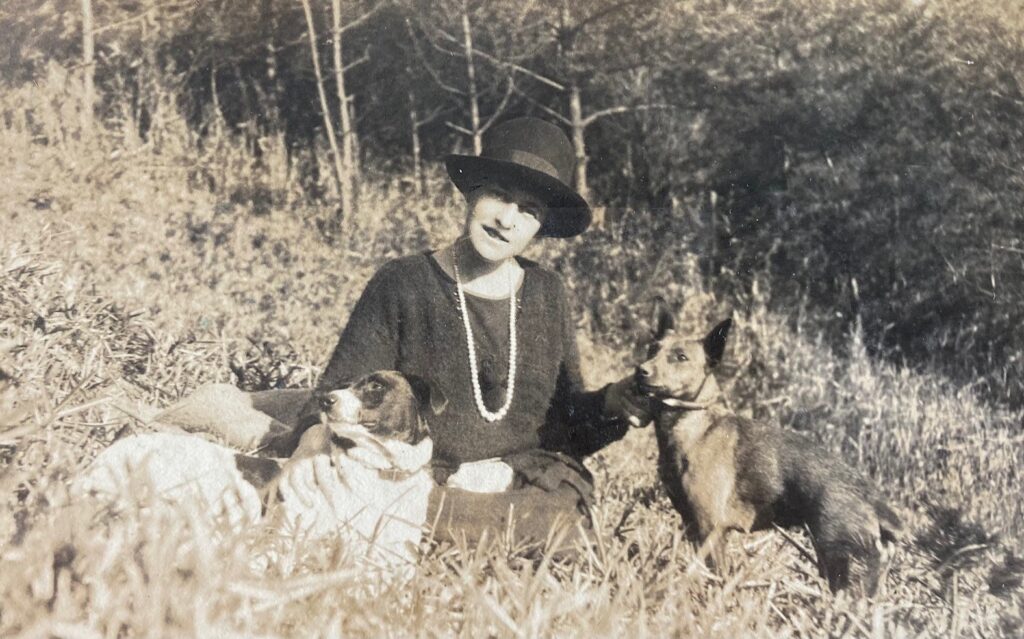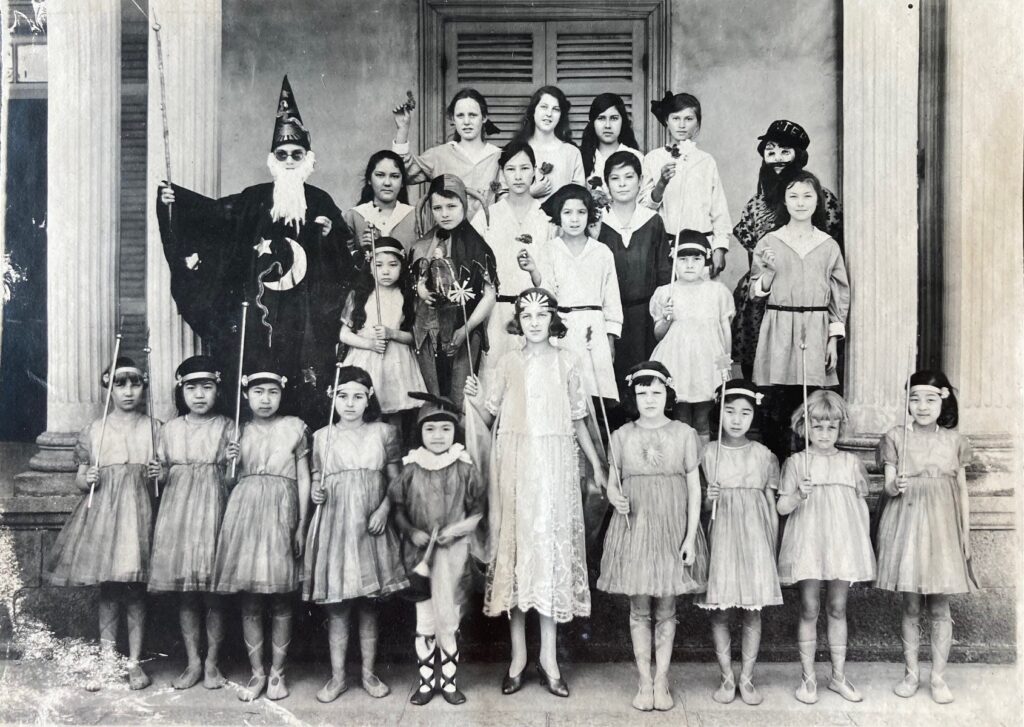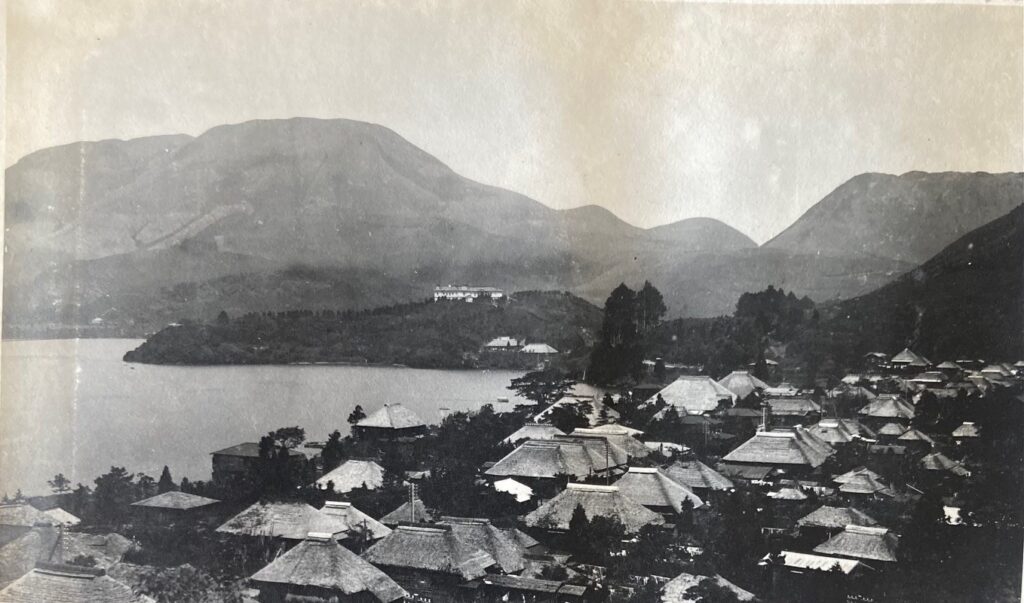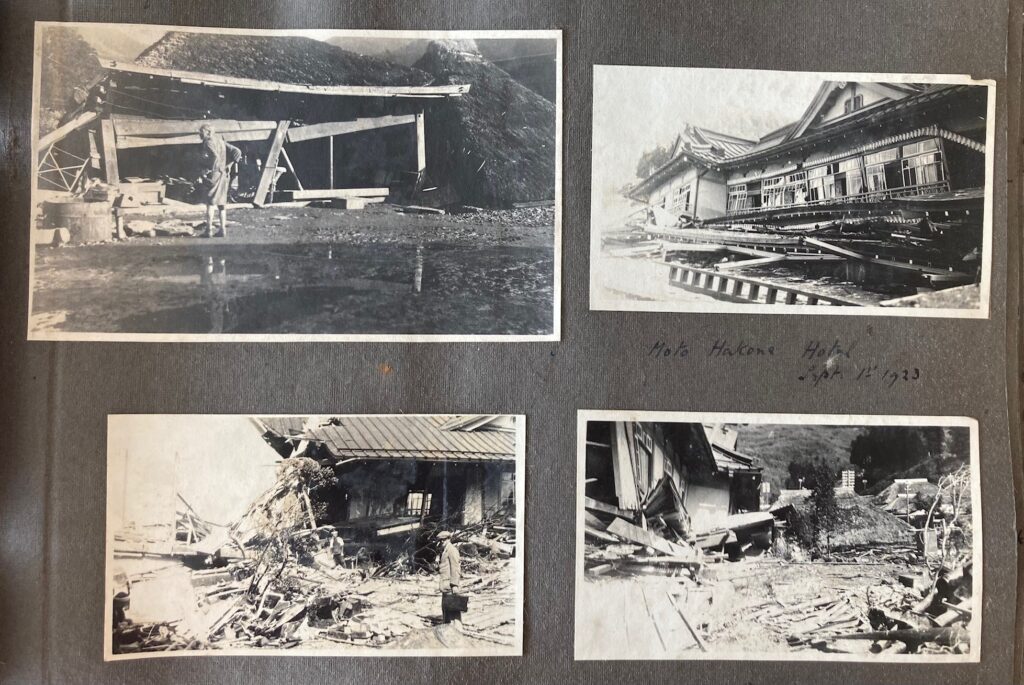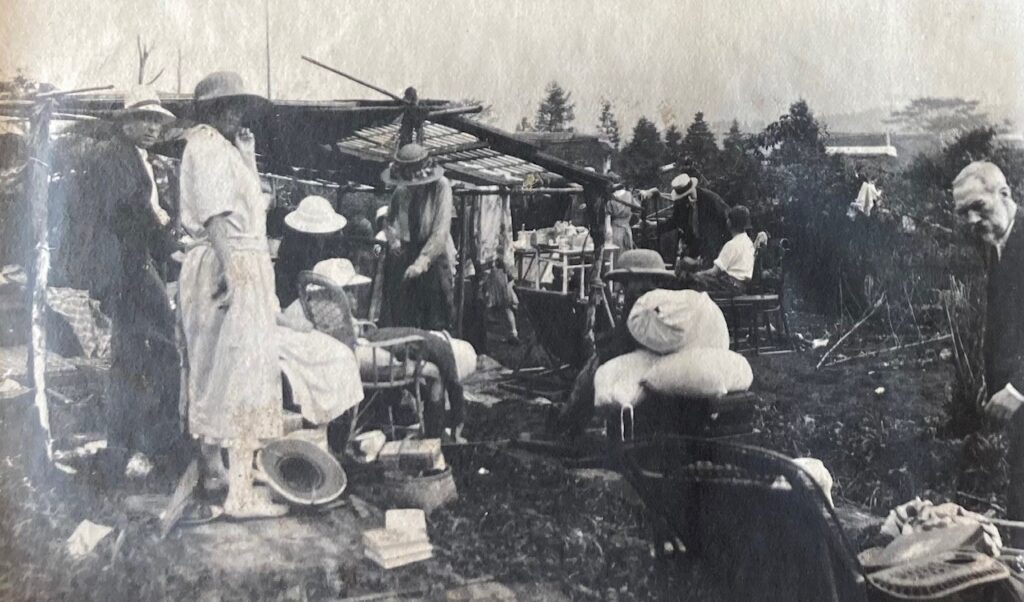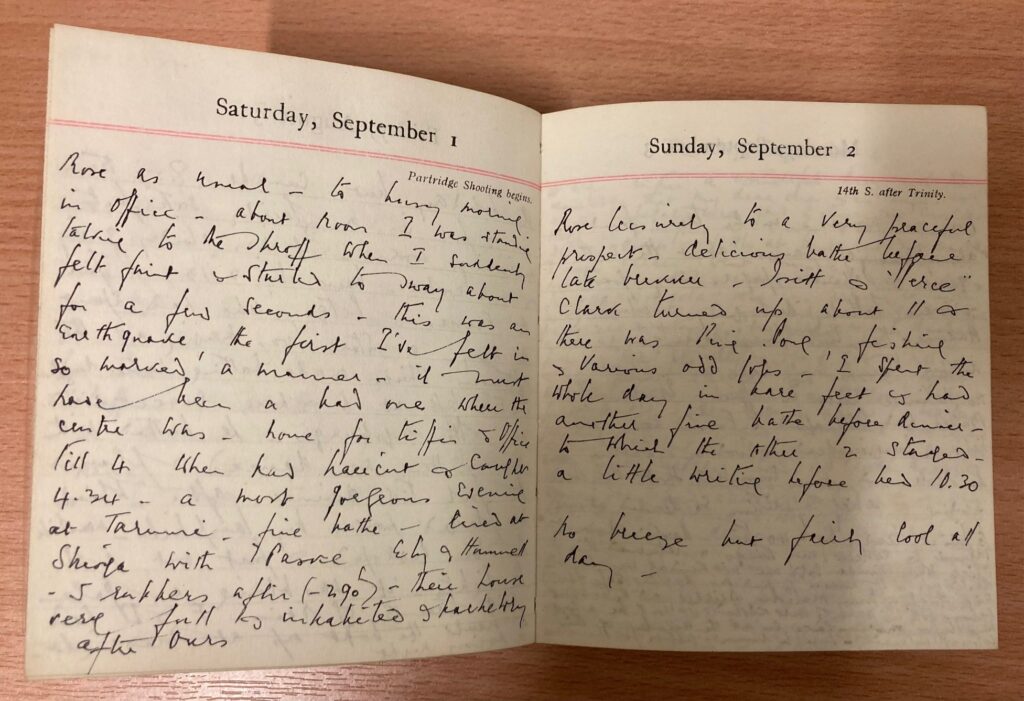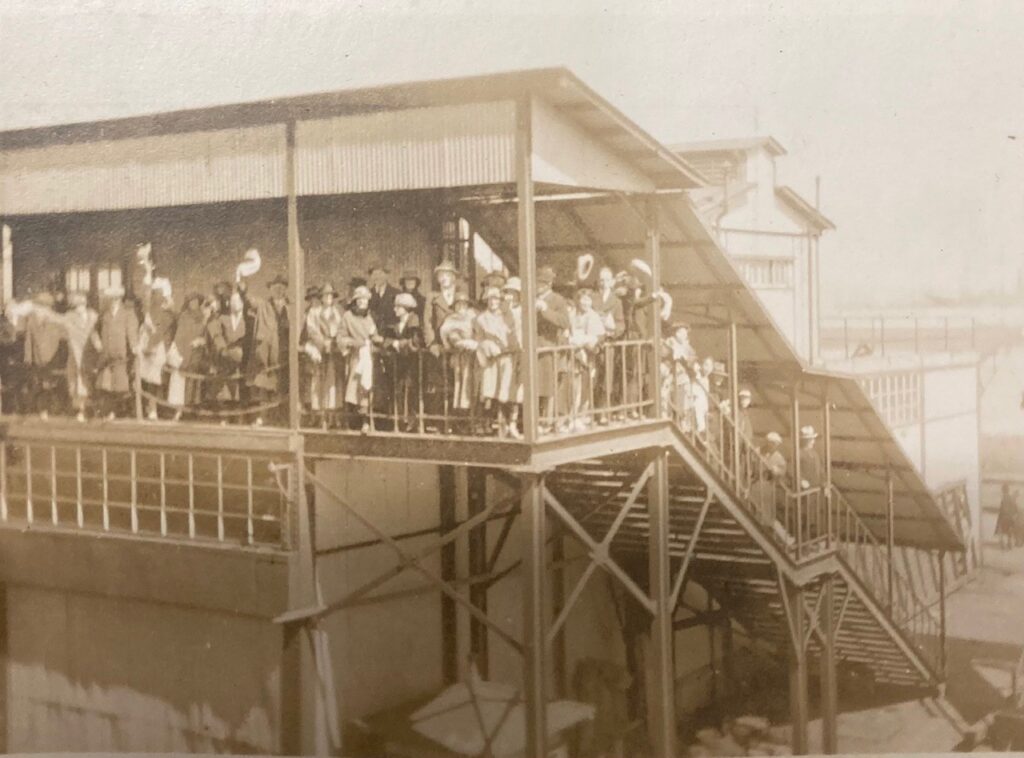To mark the centenary of the Great Kantō Earthquake of 1923, we are publishing a blog by Ash Mowat, a volunteer in the Civic Engagement Team, which explores the archives of a Scottish survivor. The composer Sheena Tennant Kendall was resident in Japan from 1919 to 1924 and lived through the catastrophe, describing its impact in her diary and photographing the ensuing devastation.
Sheena Tennant Kendall
Sheena Tennant Kendall (1883-1974) was a Scottish composer who studied under the celebrated French music teacher and conductor Nadia Boulanger. Her musical works, of which Edinburgh University Library holds an archive (Coll-2055), consist mostly of piano settings of poems by writers such as W. B. Yeats, Lord Tennyson, and W. E. Henley. In addition, she kept diaries of her travels in Germany, Japan, India, Egypt and elsewhere, which also document her experiments with photography.
In July 1919, Sheena married Herbert Moorhouse Kendall (1881-1964), known as ‘Ken’. At the end of the year, the newly-weds travelled together to Kobe, Japan, where Ken worked for the British shipping company P&O.
- Sheena and Ken on the day of their engagement
The Great Kantō Earthquake of 1923
This devastating 7.9 scale earthquake hit the Kantō Plain on the main Japanese island of Honshū on 1 September 1923 (a date now annually marked in Japan as Disaster Prevention Day). The earthquake extended well beyond its epicentre, causing catastrophic damage throughout the Kantō region, including major destruction to the capital Tokyo. There were over 100,000 confirmed deaths as a result of the earthquake, with tens of thousands more missing and presumed dead. Many of the dead perished in firestorms, a particular hazard given the prevalence of wooden homes and buildings in Japan, and the fires took several days to extinguish.
A further alarming consequence of the earthquake was an outbreak of anti-Korean sentiment and violence, with mobs killing ethnic Koreans in the thousands, following false rumours that Koreans were exploiting the earthquake and were intent on harming Japanese interests.
Visit to Edinburgh University Library Archives
I was fortunate to be able to access the diaries of Sheena and her husband Ken (Coll-1746) who were both resident witnesses of the Kantō earthquake of 1923. Their time in Japan is also recorded in an album of photographs taken by Sheena (Coll-2054).
I should clarify at the outset that the following is not an extensively researched analysis of these diaries and photographs, as I did not have the time and resources to attempt that. My aim is more to offer a flavour and snapshot of the diaries, specifically Sheena’s diary for 1923 and early 1924, and her husband’s diary covering the earthquake on 1 September 1923 and part of its aftermath.
- Sheena in Kobe with her dogs Susan and Micky
In looking through Sheena’s diary of 1923, the entries have a quotidian quality of recording daily activities which are often quite repetitive as her days were seemingly very structured. An early entry from 3 January 1923 displays Sheena’s humour when she comments: ‘Very cold weather-pipes frozen and no baths-and the usual plumber who “cometh-not-she-said” [a quotation from her beloved Tennyson]. I suppose plumbers are the same all the world over.’
Her diary does reveal the very privileged circumstances of their family life in Japan, with almost daily tennis matches, lunches, dinners, and dances. There was not, at least in the limited amount of reading that I could complete, much in the way of vivid immersive descriptions of the unique geography, peoples, culture and experiences of living in Japan as a foreigner. Nevertheless, we do see insight into her active and diverse daily living experiences.
Sheena clearly worked hard to embrace the culture of Japan, assiduously taking Japanese language lessons every morning, playing tennis and other activities with Japanese citizens, and games of Mah-jong in the evenings. Also, from her diary in January 1923 she recounts her experiences of listening to a musical performance from a Hawaiian troupe: ‘quite good & interesting – they are very skilful on their instruments and have rather soft voices.’
Sheena refers frequently to producing and performing in plays and musicals whilst in Japan, working with Japanese nationals as well as fellow British and European residents. On 15 February 1923 she writes: ‘I brought back another play to read & cast which is suggested for our next production here.’ And later from 20th March: ‘I went to the convent this morning & stayed an hour & went through part of the play with the children. I’m afraid it is going to be no easy task to get the thing into any kind of shape.’
- The cast of a children’s play produced by Sheena in Kobe, May 1923
Sheena’s Diary for 1 September 1923
When the earthquake struck, Sheena was holidaying with friends in the spa town of Hakone, which offers spectacular views of Mount Fuji, but was perilously close to the epicentre of the earthquake in Sagami Bay. Her husband Ken was safe nearly 300 miles away in the P&O Office in Kobe.
- A holiday snap of Hakone days before the earthquake
Sheena’s diary for 1 September begins as an account of a stormy holiday morning:
Poured with rain all night & blowing pretty hard this morning. After breakfast the Tebbutts, Mrs Elgar and I struggled out and baled the boats and got the rowing boat & the canoe up on the beach as it looked very typhoony. I wrote letters in the morning.
Then, in words which may have been added at a later date, she writes:
The earthquake happened shortly after this – at 11.55 – in which the house collapsed & I nearly lost my life in it. The Tebbutts were both killed in the hotel to which they had gone to see someone.
Her photographs taken dated on the day of the earthquake portray the catastrophic damage caused, showing collapsed buildings:
- Earthquake damage in Hakone
and a camp for now homeless survivors:
- Improvised refugee camp in Hakone
Ken’s Diary
Unsurprisingly, Sheena took a break from her diary, with no entries for the rest of 1923. Her husband Ken, however, continued to keep his diary and the image below of his entries for 1-2 September is quite startling.
- Ken’s diary entries for 1-2 September 1923
The entry for 1 September begins by describing a busy morning in the Kobe P&O office, then
about noon I was standing talking to the shroff [i.e., cashier] when I suddenly felt faint & started to sway about for a few seconds – this was an earthquake, the first I’ve felt in so marked a manner – it must have been a bad one where the centre was.
That the impact of the quake could be felt at so great distance from the epicentre speaks to its extraordinary strength. Ken does not refer to the earthquake in the next day’s entry, perhaps indicative of the shock of the event and of era-related delays in communication.
By 3 September, though, he describes finding ‘an atmosphere of panic about the earthquake’ on his train into work:
Japanese papers say Yokohama and Tokio tottaly [sic] destroyed, including Hakone – this last news horrifying to me as my Sheena may have been taken.
Ken promptly decides to join a relief expedition to Hakone but in the midst of his preparations is informed that his wife has survived. He describes dashing to his house ‘to find my darling safe & sound’. She has just arrived back in Kobe with other survivors including the orphaned baby son of the Tebbutts. Ken’s diary entry for 3 September ends ‘it will be a long time before one can take in all the tragedy of this colossal calamity’.
Over the follow days, Ken charts P&O’s efforts to assist the relief operation. The company’s two Glasgow-built passenger liners the SS Dongola and SS Mantua are used to ferry refugees from Tokyo and Yokohama, and as temporary accommodation for them when they arrive in Kobe. He describes listening to the ‘harrowing experiences’ of survivors, noting how the earthquake’s impact was exacerbated by having struck ‘two thickly populated cities at noon, to be followed by the added horror of fire’.
Sheena finally returns to her diary on 1 January 1924, writing: ‘After a lapse of four months in which I ceased writing this diary I must make a fresh start with a New Year. My last entry was at Hakone at about 11 o’c on the morning of September 1st. An hour later I came as near to a violent death as I trust I ever shall. The earthquake seems to have joggled me temporarily out of my diary keeping habits.’
Two months later, Sheena and Ken left Japan, setting up home in Britain, where Sheena gave birth to the couple’s only child Hugh in 1926. Neither of their diaries gives a clear reason for their hasty departure, but it seems likely that the trauma of the earthquake was a major factor.
- Friends and colleagues wave farewell as Sheena and Ken depart from Kobe
Archival Sources
Photograph Album of Sheena Tennant Kendall
Archive of Sheena Lillian Tennant Kendall
Blog authored by Ash Mowat with additional materials from Paul Barnaby.
